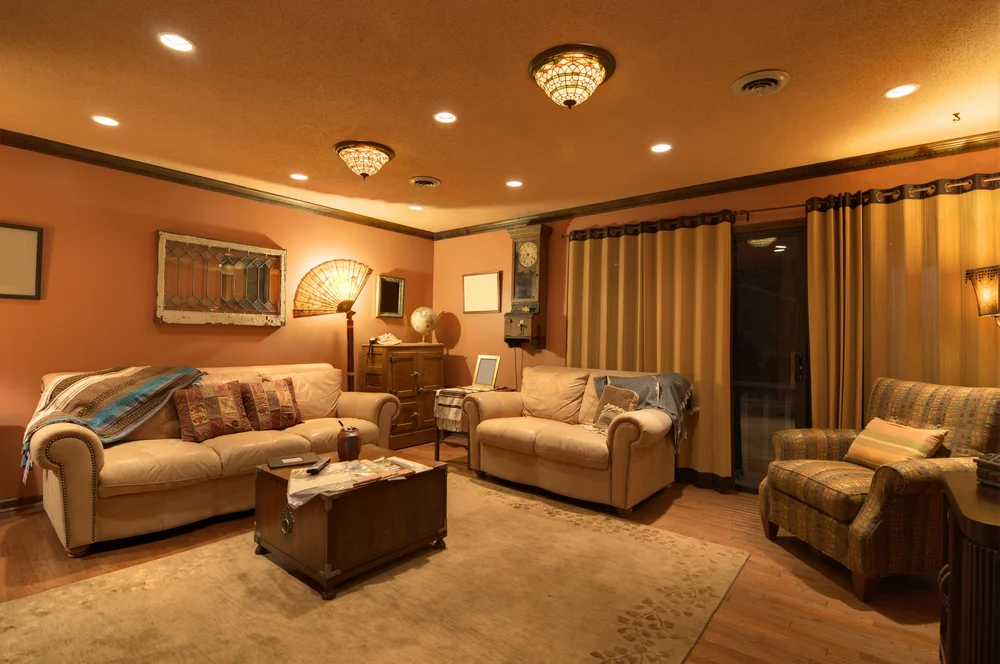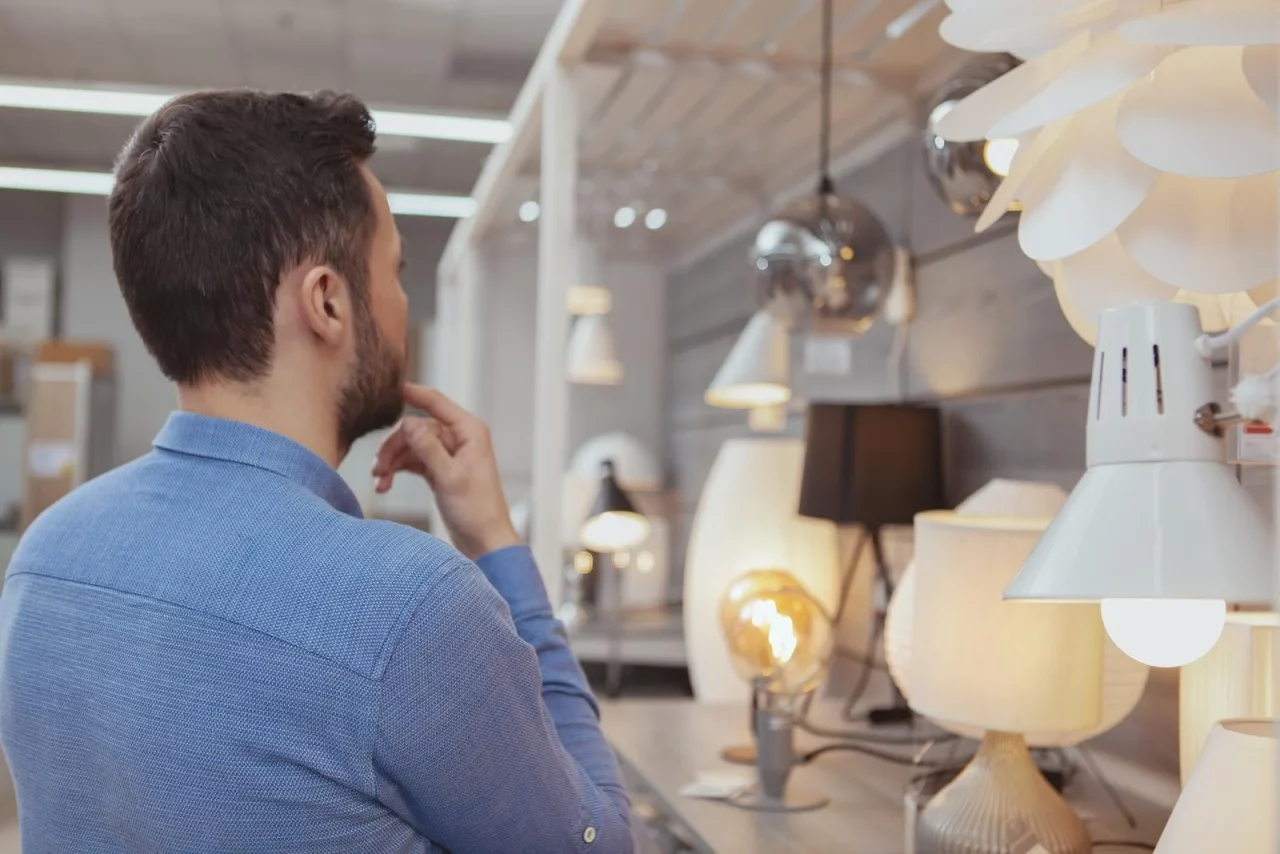How to Choose Lighting for Your Home: From Functionality to Style
Choosing the right lighting is essential for enhancing both the functionality and style of a home. Knowing how to choose lighting for your home can be challenging because there are so many lighting options available in terms of the designs, types, and technologies. This article will help provide a guide on choosing lighting for your home based on style, energy-efficient solutions, brightness, temperature, fixtures, and more.
Different types of lighting
There are different types of lighting options and knowing how to choose light based on its features and purpose is important.
Accent
Accent lighting is the first type. This, as the name suggests, is meant to draw attention or accent something in particular like a piece of art, a unique architectural element in your home, or something displayed on a shelf.
Some examples include:
- Recessed lights
- Wall-mounted lights
- Downlights
Task
Task lighting is designed to encourage the performance of specific activities or tasks, which is where it gets its name. The most common task lights are installed in areas where you do a lot of work, the kitchen where a lot of cooking is done and reading, as well as living rooms or libraries where the majority of the activity is reading.
Some examples include:
- Lights under your cabinets
- LED strip lights
- Desk lamps
Ambient
Ambient lighting is the primary form of lighting in your space. It’s sometimes called general lighting. It’s what sets the tone and the brightness for your ambient lighting will determine how comfortable the space is.
Ambient lighting should be cooler and is ideal for dining areas, bedrooms, or living rooms. Ambient lighting should be bright enough that everyone can see one another, move around safely, and spend a lot of time in that space.
Some examples include:
- Wall sconces
- Floor lamps
- Lighting fixtures
- Ceiling lights
- Windows

Different light sources
In addition to the type of lighting, you also have to choose the light source. The light source refers to the type of light bulb you use.
Incandescent lights use 15 lumens per watt. halogen lights use 15, fluorescence use 60 and LEDs use 72. However, there are other considerations. incandescent lights generally only last 1.4 years whereas halogens last 4.2, fluorescence last 14 and LEDs last 34.
Below is a guide on choosing lighting for your home or home office.
Assess your lighting needs
The first thing you want to do is assess your lighting needs. In a single room, you can expect to need several types of lighting systems or lamp types, as well as different color temperatures.
Room-by-room analysis
To achieve this, start with an analysis of each room.
- Your kitchen, for example, is a space where you will likely need a lot of task lighting with cooler temperatures to encourage energy and visibility, especially when cutting or reading recipes.
- Your bedroom is a place where you should only be engaging in two activities so you don’t need a lot of bright task lighting or overhead lighting. In many cases, the majority of your lighting needs for a bedroom will include bedside lamps for light reading or to calm down before bed and one overhead light for when you wake up or are changing the sheets or getting ready in the morning.
- Your bathroom is a place that needs a lot of task lighting, and you’ll likely need things like bright LED strip lights around the mirror where you get ready, as well as lighting above the shower and perhaps lighting under the cabinets. This is not a place, however, for any type of floor lamps or smaller lamps. It might be a place for wall-mounted lamps on either side of a large mirror.
- Your living room and similar living spaces probably need the highest level of versatility when it comes to the different types of lights you have because so many different tasks take place in the living room. This space might be where you formally entertain, in which case you’ll need bright overhead lights for tasks. But it might also be a place where you want to relax in the evening, in which case you want accent lights around the fireplace or accent lights in the corner next to a piece of art. You also need to consider that this is likely a room where you have a lot of windows and get a lot of natural light, so consider where and how you want to support that natural light.
- Your hallways, while not technically a room, are places where you might need a lot of extra light. They always are a great place for accent lighting or ambient lighting, especially wall-mounted lights.
Functionality vs. aesthetics
After you have determined what type of lighting and what color lighting you need for each space, compare the functional elements with the aesthetics. The room by room analysis gives you an idea of the function you require in each space but you should also consider lighting with decorative elements that can help you achieve a harmonious design.
Decorative elements can include different material for not only the base of the light but the lampshade in general which could complement the space. You might want a specific color that serves as a good accent. if you have a minimalist home, you don’t want heavily ornate, traditional lights but rather something modern and sleek and vice versa.
Choosing the right type of fixtures
As mentioned, you need to be aware of the design and the aesthetic appeal of the lights you are choosing. To that end, you also want to choose the right fixtures.
Ceiling lights
There are many types of ceiling lights you can install for ambient lighting, and these include:
- Chandeliers
- Pendants
- Recessed lighting
Wall lights
Wall lights can add layers of lighting and depth to your room, and they work very well in spaces like living rooms where you might want to turn off the ambient lighting and only rely on accent lighting, especially if you are reading or relaxing. Some examples include:
- Wall lights
- Sconces
- Track lighting
Note: Generally, accent lighting, especially wall-mounted accent lighting, is brighter than ambient lighting, so you’ll get a brighter temperature than you would for things like overhead lights.
Floor and table lamps
Floor and table lamps can be great, not just for task lighting but specifically for accent lighting. These can add task lighting to any space like a desk or a table and offer versatility in terms of ambient lighting.
Selecting the appropriate brightness and color temperature
When it comes to selecting the lighting for your space you also need to choose the brightness and the color temperature.
Lumens vs. watts
Lumens measure how bright a bulb is. The higher the lumen rating for a given light bulb, the brighter that light will be.
Watts refers to the power or the energy the bulb requires to produce light. The higher this level, the more energy it takes and, by extension, the more it costs.
For example:
Traditional incandescent lights only produce 15 lumens per watt, while halogen lights produce 25 lumens per watt.
Color temperature
It’s important that you select the appropriate brightness and color temperature. Figuring out how to choose lighting for your room means deciding what level of brightness allows people to move around that space comfortably and perform whatever tasks they are meant to perform in that space. This might mean relaxation, it might mean cooking, and it might be socializing or reading.
When you consider color temperature, you need to figure out what the desired atmosphere will be in different rooms. For example
- If you want a cozy, intimate room, you want warm white light for things like accent lights or wall-mounted lights.
- If you want a brighter, modern space for your home or office, you want cool white light.
The color temperature you choose will create the mood and atmosphere for each room. Below is a quick guide on which temperatures create what type of space.
- 2,700 to 3,000k = warm, cozy atmosphere, usually what ambient lighting is set to
- 3,500 to 4,500k = cooler, task lighting for high energy and focus
- 4,000 to 5,000k = bright, modern atmosphere

Incorporate smart and energy-efficient lighting
You should also consider whether or not you want to incorporate smart lighting or energy-efficient lighting.
Smart lighting options
Smart lighting options are linked to things like smartphones or other interfaces where you can have remote control access to your lighting system. This helps you change the colors and control how much you save on energy costs based on your usage. This can be particularly useful if, for example, you want to enhance security when you are out of town, but don’t want to leave your lights on all day; rather, you want to leave them on only at night so it looks like someone is home.
Energy efficiency
Choosing energy efficient lighting has long-term savings. LED lights cost more upfront but they also have a significantly longer lifespan. you might save money on incandescent bulbs up front but they only last an average of 1.4 years whereas LED lights can last upwards of 35 years. This means that your investment in light bulbs is an initial investment that you only have to make a few times over the course of your life.
Style and design considerations
Touched upon briefly, there are several ways to figure out how to choose lights for your home that also incorporate your design elements.
Matching lighting with decor
It’s important to consider whether you want to match your lighting to your decor. light fixtures should complement the home’s architectural style and interior design. You don’t want traditional wall mounted sconces in your hallway if you have a home with a French country style just the same as you don’t necessarily want LED strip lighting around the kitchen if you don’t have a modern, contemporary kitchen.
Trendy vs. timeless designs
When you are choosing your light fixtures, consider whether you want something trendy for your light solution or something classic that you’ll never have to change.
Summing Up
Learning how to choose lights for your home involves a lot of considerations. It’s important that you carefully select home lighting for its functionality and style. Always take a thoughtful and informed approach when choosing lighting for your home.
